Different Types of Proximity Sensors with Working & Applications
In today’s fast-changing world of technology, proximity sensors are excellent in enhancing the functionality and efficiency of different systems. These sensors help devices detect objects without physical contact. which is useful in both industrial settings and consumer electronics. This article will explain the different types of proximity sensors—capacitive, inductive, photoelectric, ultrasonic, and magnetic. We will explore their working principles, main components, applications, and advantages and disadvantages. This guide will help you understand and choose the right sensor for your needs.Catalog

Figure 1: Proximity Sensors
Capacitive Proximity Sensor
Capacitive sensors can detect targets without touching them and are useful in many ways. It can identify solid materials like paper, plastic, glass, cloth, and wood, and also to liquids such as oil, paint, and water. Capacitive proximity sensors are widely used in different industries, capable to detect both conductive and non-conductive materials. They operate by creating an electric field between two plates separated by a dielectric substance. When an object enters this field, the capacitance between the plate changes, modifying the output signal that indicates the object's presence.
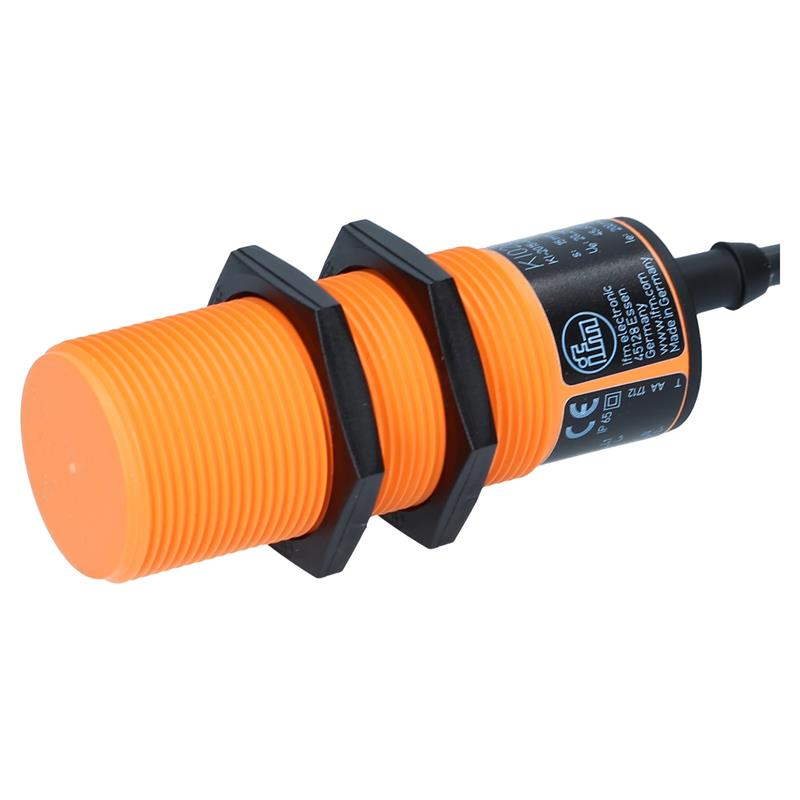
Figure 2: Capacitive Proximity Sensor
Main Components of Capacitive Proximity Sensors
A capacitive proximity sensor consists of four main parts.
Sensor Body: Encases the circuitry that powers the sensor and is made from durable materials to endure industrial environments.
Sensing Face: Positioned at the front, this is the primary detection point, designed to interact with the target object with optimized sensitivity and durability.
Indicator Light: Located opposite the sensing face, it lights up when an object is detected, providing instant visual feedback.
Sensor Connection: This could be a pre-attached cable or a connector, chosen based on installation needs and ensuring secure connectivity.
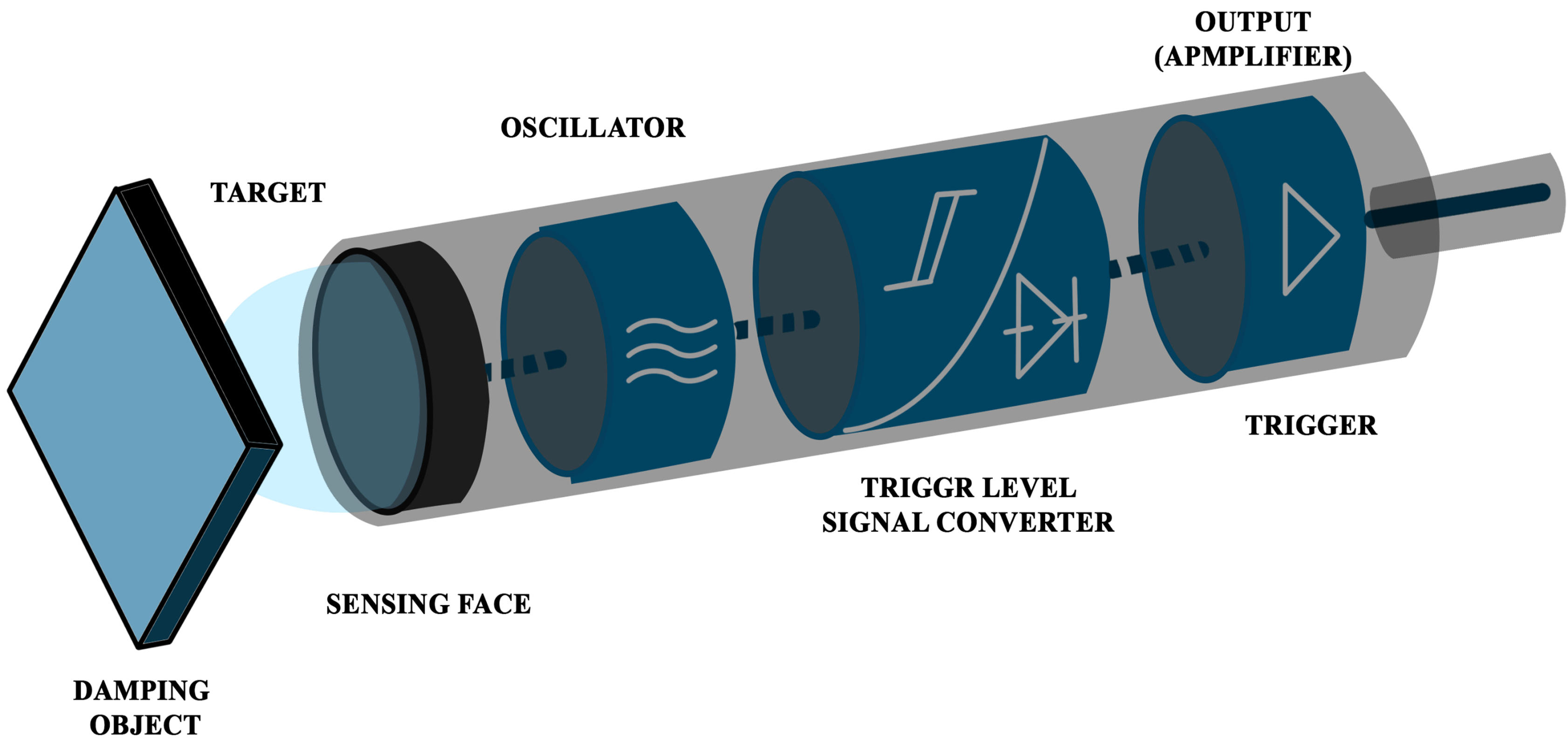
Figure 3: Capacitive Sensor Wiring Diagram
Working Principle of Capacitive Proximity Sensors
Capacitive proximity sensors operate based on capacitance, the ability to store an electrical charge. An oscillator circuit generates an alternating electric field at the sensing face, which is sensitive to nearby objects. The detector circuit monitors changes in capacitance, and when an object approaches, the capacitance changes, which the circuit detects. The solid-state output circuit then converts the capacitance change into an output signal, triggering actions such as alarms or machinery stops.

Figure 4: Capacitive Sensor Working Principle
When an object approaches the sensing plate, it alters the system's capacitance. This change is detected by the circuit, which then sends an output signal indicating the presence of the target object.
When the oscillator circuit reaches a specific amplitude, it will start oscillating and adjust the sensor’s output condition. As the target moves away from the capacitive sensor, the oscillator’s amplitude will decrease, returning the sensor to its original state.
The detection range of this sensor is approximately 1 inch or 25 mm, but some sensors can extend their range up to 2 inches. This sensor proved that it can easily detect objects with a superior dielectric constant.

Figure 5: Capacitive Sensor
Types of Capacitive Proximity Sensors
There are different kinds of capacitive sensors, each made for specific purposes.
Miniature capacitive sensors are made for small spaces and come in wafer or cylindrical shapes. They are needed for monitoring and controlling machine processes, often working as job counters or detectors. Because they are so small, they usually need an external amplifier to work well. This amplifier has a potentiometer that lets you adjust the sensitivity, ensuring precise detection in tight areas. Their small size makes them perfect for places where space is tight but accurate detection is a must.

Figure 6: Miniature Capacitive Sensors
Cylindrical capacitive sensors are bigger than miniature sensors and come in various diameters, from ∅6.5 – M12 to M12 – M30. These sensors allow you to adjust their sensing distances and choose from different housing sizes and mounting options, including flush and non-flush. They are mainly used for detecting levels and proximity without contact and can even sense through container walls.
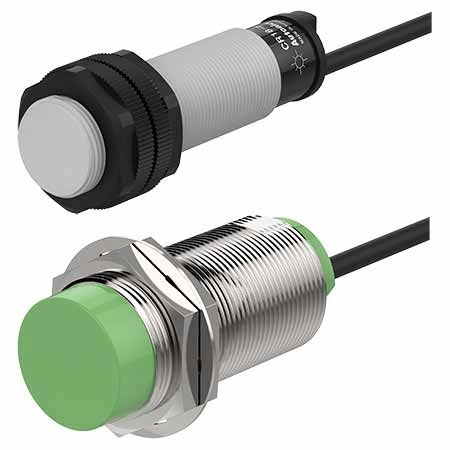
Figure 7: Cylindrical capacitive sensors
High-temperature capacitive sensors are ideal for very hot places like metal foundries, chemical plants, and food processing facilities. They accurately measure and monitor liquids and bulk materials even when extremely hot. Made from heat-resistant materials, these sensors are durable and perform consistently in high temperatures. Their advanced electronics manage heat stress, ensuring reliable readings. Beneficial for industries working with extreme heat, these sensors enhance safety, improve efficiency, and help maintain smooth operations in tough conditions.

Figure 8: High-temperature Capacitive Sensors
An analog capacitive sensor works like regular capacitive sensors but offers additional benefits depending on its use. These sensors are excellent for selecting materials, monitoring thickness, and detecting concentration differences, making them more versatile compared to other applications.
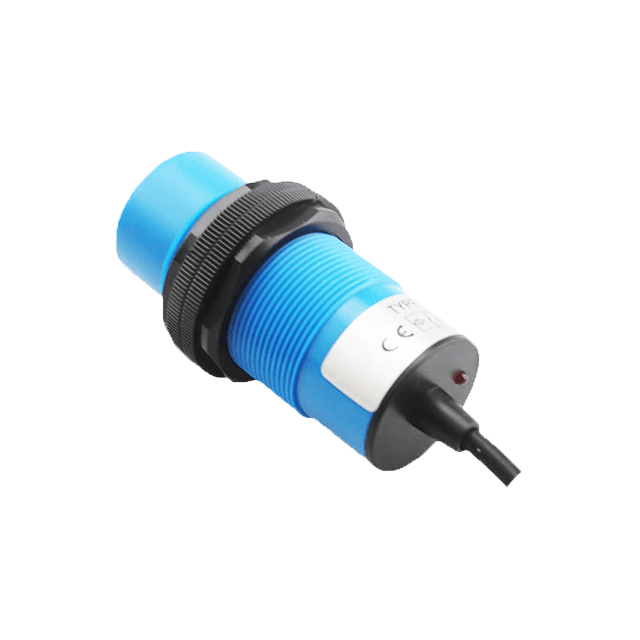
Figure 9: Analog Capacitive Sensor
Applications of Capacitive Proximity Sensors
One application for these sensors is level sensing. These sensors are very useful for measuring the level substances in containers or tanks. This is beneficial for managing resources and keeping systems running smoothly. For example, in water management, sensors are used in automatic pump systems to check water levels. When the water reaches a certain point, the sensor tells the pump to turn on or off, stopping overflows and making sure there’s always enough water.
In a car factory, proximity sensors check that parts are in the right spot before machines move on to the next task. This helps avoid mistakes and keeps everything running smoothly by making sure each part is where it should be. Workers can change machine settings based on what the sensors say, making production faster and reducing waste.
Consumer electronics like smartphones and tablets use capacitive sensors to detect touch input on your screens. This technology is now applied to laptops with touch-sensitive trackpads, enhancing user interaction.
Capacitive sensors are useful in industrial settings. They can help by finding materials, checking different materials, measuring material thickness, and distances between objects.
In healthcare, capacitive sensors are needed. They help in medical devices like blood pressure monitors by measuring pressure accurately.
Advantages and Disadvantages of Capacitive Proximity Sensors
Capacitive proximity sensors have benefits like non-contact detection, excellent in detecting various materials, and resistance to dust and moisture. However, they are sensitive to electromagnetic interference (EMI) and radio frequency interference (RFI), which might make them give false readings, and their sensing range is shorter than other types of sensors.
Examples of Capacitive Proximity Sensors
Popular capacitive proximity sensors in the market include models like M12, M18, M30, CR30-15AO and CR18-8DN, known for their reliability and varied application suitability.
M12, M18, M30: Frequently used in industrial applications for their reliability and all-around application suitability.
CR30-15AO: Offers a larger sensing range and enhanced durability.
CR18-8DN: Known for its strong performance and high sensitivity.
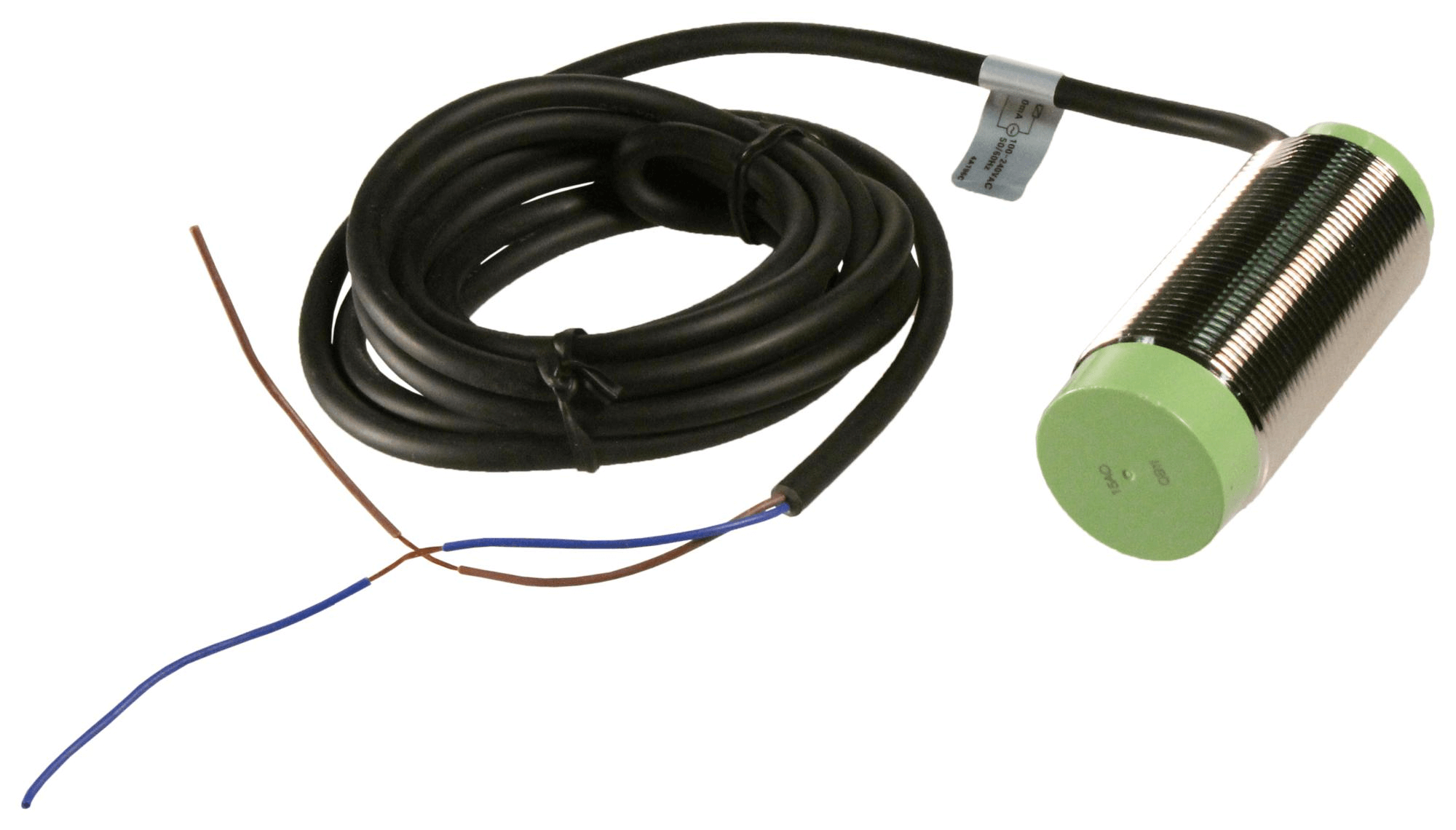
Figure 10: CR30-15AO
Selection Criteria for Capacitive Proximity Sensor
When selecting a capacitive proximity sensor, consider the sensing range required for your application and assure compatibility with the target material properties. Choose a sensor that can withstand environmental conditions such as dust, moisture, and temperature changes. Follow the manufacturer's guidelines for installation, including proper mounting and wiring, keeping the sensing plate clean, and avoiding sources of electromagnetic and radio-frequency interference (EMI/RFI).
Inductive Proximity Sensor
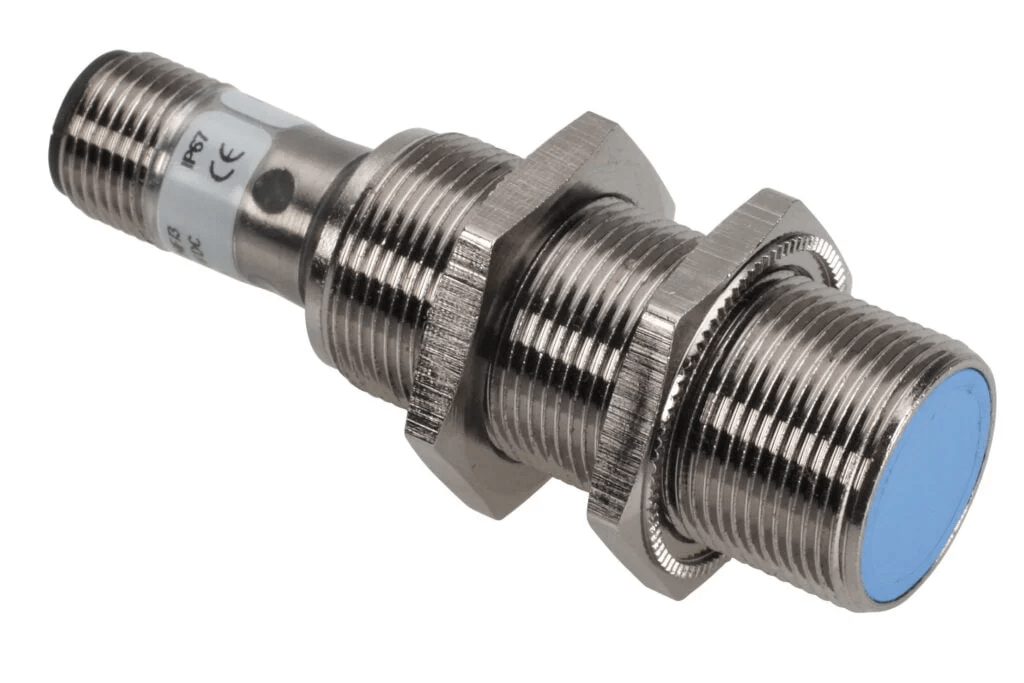
Figure 11: Inductive Proximity Sensors
Inductive proximity sensors are useful in industrial settings because of their durability and dependability. These sensors detect metal objects through electromagnetic induction. When a metal object enters the sensor's electromagnetic field, it causes eddy currents that change the sensor's output.
Main Components of Inductive Proximity Sensor
An inductive proximity sensor consists of four main parts.
Coil: Creates an electromagnetic field, which is strengthened by a ferrite core.
Oscillator: Produces a high-frequency electromagnetic field.
Schmitt Trigger: A regenerative comparator circuit that introduces hysteresis by applying positive feedback to the non-inverting input of a comparator or differential amplifier.
Output Amplifier: Employs an NPN or PNP transistor to indicate the detection of a metallic object.
Working Principle of Inductive Proximity Sensor
These sensors operate by generating an electromagnetic field. When a metal object comes into contact with this field, it causes eddy currents to develop within the object, which in turn affects the amplitude of the sensor’s oscillator. The sensor's internal circuits detect this change and generate an output signal to indicate the presence of the metal object.
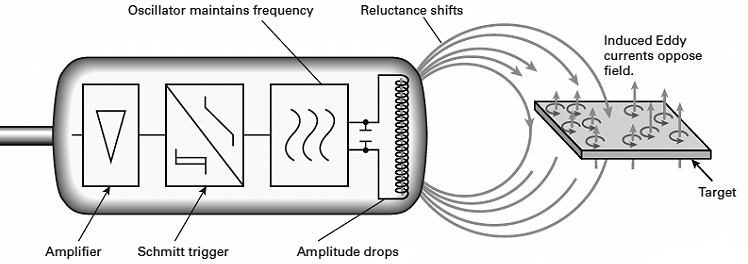
Figure 12: Inductive Proximity Sensor Working Principle
Types of Inductive Proximity Sensors
Inductive proximity sensors come in three main types.
Standard Sensors: These sensors feature a coil, an oscillator, and signal processing circuits, offering a well-balanced range and sensitivity.
Shielded Sensors: Have a metallic shield around the sensing coil, providing better immunity to interference but with a reduced sensing range.
Unshielded Sensors: Lack a metallic shield, resulting in a larger sensing range but more susceptibility to external magnetic interference.
Applications of Inductive Proximity Sensors
These sensors are commonly used for position sensing, object detection, collision detection, speed sensing, and in automated machinery. They are commonly used in many applications.
In manufacturing and assembly lines, these sensors help monitor and control the position and movement of parts, making production easier and more precise. In material handling systems, particularly in logistics and warehousing, these sensors aid in the smooth transfer and handling of materials, reducing errors and speeding up operations. And in vehicle detection systems, used in traffic management and automotive applications, these sensors help detect vehicles, aiding in collision prevention and traffic management.
Advantages and Disadvantages of Inductive Proximity Sensors
Inductive sensors offer non-contact sensing, high speed, and reliability. They are unaffected by the color and surface finish of the target object. However, they can only detect metallic objects, and their sensitivity varies with different metals, necessitating calibration for specific applications.
Examples of Inductive Proximity Sensors
LJ12A3-4-Z/BX: Versatile for industrial applications.
PR12-DN: Reliable in manufacturing processes.
SN04-N: Known for efficiency and durability.

Figure 13: SN04-N
Photoelectric Proximity Sensor
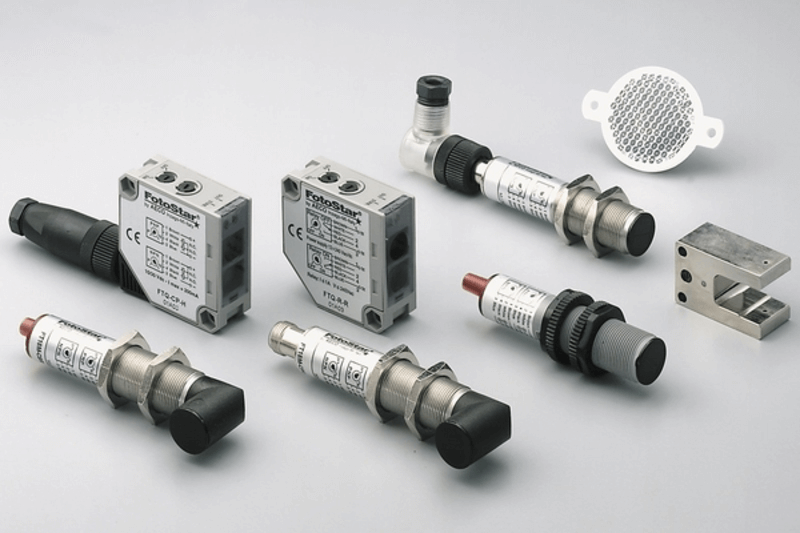
Figure 14: Photoelectric Proximity Sensor
Photoelectric proximity sensors use light to determine if objects are present or absent. These sensors include a light emitter and a receiver. When an object blocks the light beam, the receiver's output changes.
Main Components of Photoelectric Proximity Sensor
Photoelectric proximity sensor consists of four main parts. These components work together to detect even small objects precisely, ensuring accurate and reliable operation.
Light Source: Usually, an LED or laser diode emits the light beam.
Light Detector: A photodiode or phototransistor detects the light.
Signal Converter: Converts the detected light into an electrical signal.
Amplifier: Boosts the electrical signal for processing.
Working Principle of Photoelectric Proximity Sensors
Photoelectric sensors work by emitting a modulated light beam. When an object reflects or interrupts this beam, the light detector senses the change in light intensity and generates an electrical signal to indicate the object's presence. These sensors are highly sensitive to light variations and can operate over long distances, making them resistant to electromagnetic interference.
Types of Photoelectric Proximity Sensors
Through-Beam Sensors: These have separate transmitter and receiver units. They offer the longest sensing range and highest accuracy.

Figure 15: Through-Beam Sensors
Retro-Reflective Sensors: The transmitter and receiver are combined in one unit, using a separate reflector. They provide a moderate sensing range and easier installation.

Figure 16: Retro-Reflective Sensors
Diffuse-Reflective Sensors: The transmitter and receiver are combined, relying on the target object to reflect the light. They offer the shortest sensing range but are the easiest to install.
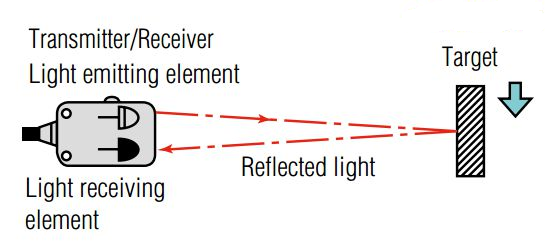
Figure 17: Diffuse-Reflective Sensors
Applications of Photoelectric Proximity Sensors
These sensors are used in conveyor systems, packaging, automatic dispensers, and object-counting applications. They are also found in everyday items like automatic soap dispensers, toys, vending machines, and automatic doors. Their extensive application underscores their adaptability and dependability, making them valuable in both industrial and consumer applications.
Advantages and Disadvantages of Photoelectric Proximity Sensors
Photoelectric sensors offer advantages like long sensing range, high accuracy, and immunity to electromagnetic interference. However, they can be affected by the object's color and surface characteristics, and their performance may be influenced by environmental conditions such as dust and ambient light.
Examples of Photoelectric Proximity Sensors
E18-D8NK: Known for its strong design and effectiveness in different applications.
TCRT5000: Commonly used in line-following robots and object detection tasks.
RPR220: Renowned for its precision and reliability in detecting small objects.
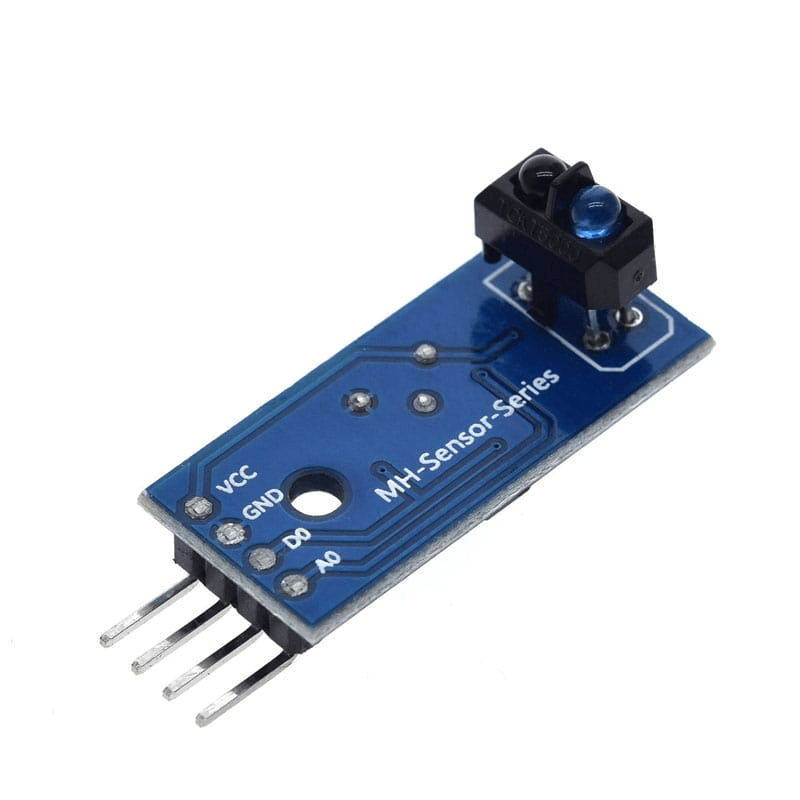
Figure 18: TCRT5000
Selection Criteria for Photoelectric Proximity Sensors
When choosing a photoelectric proximity sensor, consider the sensing range, target object properties, environmental conditions, and installation requirements. Through-beam sensors offer the longest range, while diffuse-reflective sensors are more sensitive to object variations but easier to install.
Ultrasonic Proximity Sensor
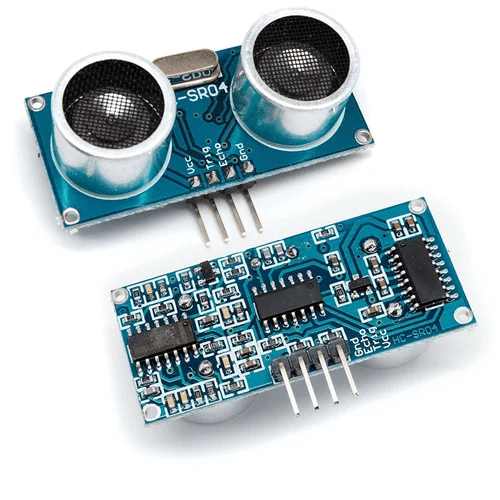
Figure 19: Ultrasonic Proximity Sensor
Ultrasonic proximity sensors use sound waves to detect objects. They emit high-frequency sound waves and measure the time it takes for these waves to return after bouncing off an object, calculating the distance based on the time taken.
Main Components of Ultrasonic Proximity Sensor
Emitter (Transmitter): Sends out ultrasonic waves.
Receiver (Transducer): Detects the reflected waves and converts the received waves into an electrical signal and interprets this signal to determine the distance to the object.
Working Principle of an Ultrasonic Proximity Sensor
Ultrasonic sensors function by emitting ultrasonic waves from a transducer. When an object is within range, these waves reflect back and are picked up by the transducer. The sensor calculates the distance to the object by measuring the time interval between sending and receiving the waves.
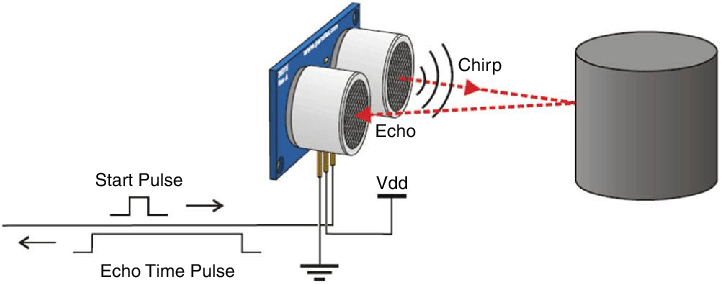
Figure 20: Working Principle of an Ultrasonic Proximity Sensor
Types of Ultrasonic Proximity Sensors
Through-Beam Sensors: Have separate transmitter and receiver units. Detection happens when an object interrupts the ultrasonic beam between them.
Reflective Sensors: Combine the transmitter and receiver in one unit. They detect objects by capturing the reflected waves.
Applications of Ultrasonic Proximity Sensors
Ultrasonic sensors functionality allows them to perform multiple tasks, such as object detection, level sensing, presence detection, and distance measurement. Ultrasonic proximity sensors are particularly favored in the food and beverage processing industry due to their non-contact nature. This feature ensures hygienic operations and reduces the risk of contamination. In industrial automation, these sensors contribute to optimizing workflows, enhancing safety, and increasing the overall efficiency of manufacturing processes. Their ability to operate reliably in diverse environments, including those with dust, smoke, or moisture, further showed their indispensability in modern industrial applications.
Advantages and Disadvantages of Ultrasonic Sensors
Ultrasonic sensors can detect many materials, no matter their color or transparency. This makes them useful in situations where optical sensors might fail, such as with clear or shiny objects. They work well in tough conditions, like those with dust, smoke, or moisture, because they are built to be strong and reliable. These sensors emit ultrasonic waves and measure how long it takes for the waves to bounce back from an object. This helps them detect objects and measure distances accurately.
However, ultrasonic sensors can struggle with objects that have complex shapes or detailed surfaces. These can scatter the waves, making detection hard. Objects with soft surfaces that absorb sound can also be a problem, as they may not reflect the waves back well, leading to weak signals and inaccurate readings. Temperature changes can also affect ultrasonic sensors. The speed of sound changes with temperature, which can impact measurement accuracy. Although many sensors have features to adjust for temperature changes, extreme fluctuations can still cause problems. Background noise from other ultrasonic sources can interfere with the sensor's operation. In noisy environments, it can be hard to distinguish the sensor's waves from other ultrasonic sounds, which can lead to false readings or lower accuracy.
Examples of Ultrasonic Proximity Sensors
MB1242: Compact design and high precision.
MB1001: Popular for general-purpose use.
NU40A14T-1: High-performance sensor for industrial applications.
MB1634HRLV: High-resolution sensor for detailed measurements.
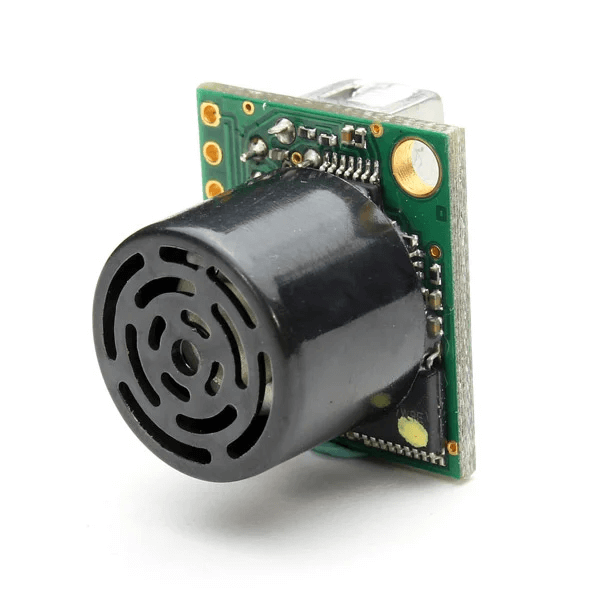
Figure 21: MB1242
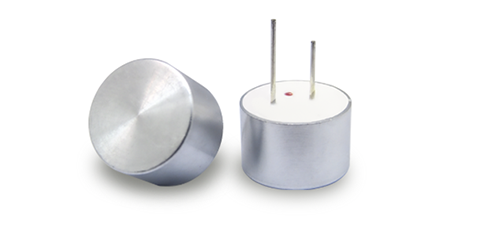
Figure 22: NU40A14T-1
Selection Criteria of Ultrasonic Proximity Sensors
When choosing an ultrasonic sensor, consider on these factors below.
Choosing Output Type: Decide if you need a digital (on/off) or analog (continuous range) output. Digital outputs work well for simple detection, while analog outputs give more detailed distance information, which is helpful for precise measurements.
Transducer Frequency: The frequency of the ultrasonic transducer impacts the sensor's range and resolution. Higher frequencies give better detail and are good for short distances. Lower frequencies can detect further but with less detail.
IP Rating: The Ingress Protection (IP) rating shows sensor's resistance to dust and water. Higher IP ratings (like IP67 or IP68) are required for harsh environments where the sensor might be exposed to moisture, dust, or other harmful substances.
Shielding: Consider whether the sensor is shielded to protect against electromagnetic interference (EMI). Shielded sensors are good in environments with high electrical noise, ensuring measurements are accurate and reliable.
Magnetic Proximity Sensor
Magnetic proximity sensors detect objects by sensing changes in magnetic fields. They consist of a magnet and a sensing element like a reed switch or Hall-effect sensor. These sensors are used for speed sensing, door position detection, and security systems.
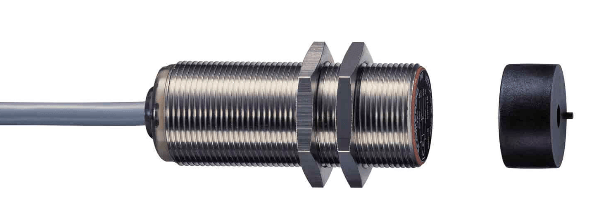
Figure 23: Magnetic Proximity Sensor
Main Components of Magnetic Proximity Sensor
Magnetic proximity sensors have four main parts.
Ferrite Core with Coils: Generates the magnetic field.
Oscillator: Creates the magnetic field.
Schmitt Trigger: Responds to changes in oscillation amplitude.
Output Amplifier: Conditions the output signal.
Working Principle of Magnetic Proximity Sensors
Magnetic proximity sensors detect magnetic fields generated by magnets or ferromagnetic objects. The sensing element, such as a reed switch, Hall-effect sensor, or magneto-resistive sensor, alters its electrical properties in response to a magnetic field. This change is then converted into an electrical signal for further processing.
Types of Magnetic Proximity Sensors
Reed Switch-Based Sensors: Simple and reliable but have a limited life cycle due to mechanical wear. Reed switches are mechanical devices that contain two ferrous metal reeds encased in a glass tube. When a magnetic field is applied, the reeds come together, completing an electrical circuit. This change from an open to a closed state can be detected and used as an input signal.
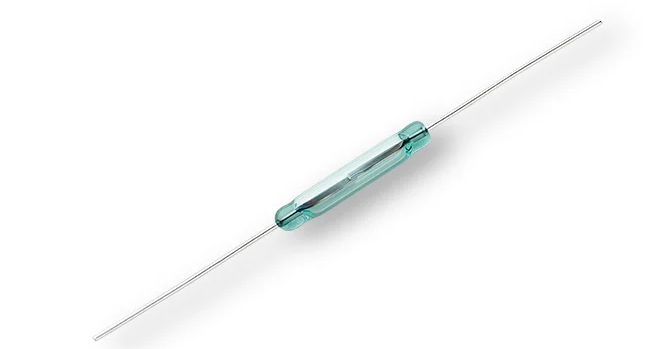
Figure 24: Reed Switch-Based Sensors
Hall-Effect Sensors: Offer improved sensitivity and durability, operating on the principle that a magnetic field affects the voltage of a semiconductor material. Hall-effect sensors work on the principle that when a magnetic field is perpendicular to the flow of electric current in a conductor, it produces a voltage (the Hall voltage) across the conductor. This voltage can be measured and is directly proportional to the strength of the magnetic field, allowing the sensor to detect the presence and intensity of the magnetic field.

Figure 25: Hall-Effect Sensors
Magneto-Resistive Sensors: Provide high sensitivity and low power consumption, ideal for detecting weak magnetic fields and precise measurements. Magneto-resistive sensors detect changes in electrical resistance in response to a magnetic field. These sensors are composed of materials whose resistance changes when exposed to a magnetic field. The variation in resistance is then converted into an electrical signal, which can be used for precise magnetic field detection.
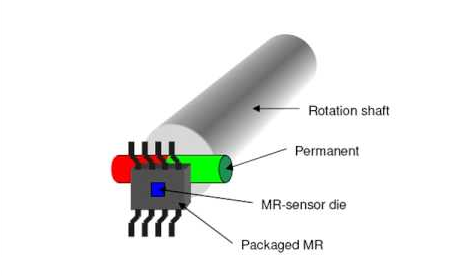
Figure 26: Magneto-Resistive Sensors
Applications of Magnetic Proximity Sensors
In security systems, magnetic proximity sensors enhance safety by detecting the opening and closing of doors and windows, alerting to potential breaches or unauthorized access. This feature is particularly valuable in both residential and commercial settings. In the automotive industry, these sensors are good for monitoring any components within a vehicle, such as tracking the position of doors, hoods, or trunk lids, and even contributing to the functionality of advanced driver-assistance systems (ADAS). By providing accurate and reliable data, magnetic proximity sensors help ensure the safety, efficiency, and reliability of numerous applications across different sectors.
Advantages and Disadvantages of Magnetic Proximity Sensor
Non-contact detection reduces mechanical wear, minimizes maintenance needs, and enhances the longevity of both the sensor and the objects being detected, making it particularly beneficial in sterile or clean environments where contact might result in contamination. Its high sensitivity is ideal for precise measurements and applications requiring high accuracy, such as in scientific instruments, medical devices, and finely-tuned industrial processes. Additionally, these sensors maintain reliable performance in harsh environments characterized by high levels of dust, moisture, or extreme temperatures, ensuring consistent functionality over time.
However, there are disadvantages as well. In environments with significant electromagnetic interference (EMI), such as those near heavy machinery or electronic devices, the sensors might produce false readings or become less effective. Temperature changes can impact the performance of magnetic sensors, which may experience drift or reduced sensitivity under extreme temperatures. Due to their susceptibility to external magnetic fields and temperature fluctuations, magnetic sensors require careful design and implementation within systems to ensure proper operation. This can increase the complexity and cost of development and integration, as additional components or shielding may be needed to protect the sensors from interference and environmental factors.
Examples of Magnetic Proximity Sensor
SEN-K11010: Known for its best performance in industrial settings.
MC-38: Commonly used in security systems for door position detection.
PR-3150: Utilized in automotive applications for its high sensitivity.
NJK-5002: Favored in consumer electronics due to its compact size and reliability.
Selection Criteria of Magnetic Proximity Sensor
Choosing the right sensor involves considering factors such as the operating environment, target material, required sensitivity, form factor, and cost. The operating environment encompasses conditions like temperature, humidity, and potential exposure to corrosive substances, which can significantly impact sensor performance and longevity. The target material is a must, as different sensors are designed to detect specific materials more effectively.
Required sensitivity determines how accurately and precisely the sensor must measure changes or detect the presence of the target material. Form factor relates to the physical size and shape of the sensor, ensuring it fits seamlessly into the intended application. Cost is a one factor, balancing the need for advanced features with budget constraints. Properly selecting a sensor by evaluating these factors ensures that it performs optimally and reliably in its specific application, enhancing the overall efficiency and effectiveness of the system it is part of.
Conclusion
Proximity sensors are best tools for automation and precise detection, each tailored for specific applications. Capacitive sensors are adaptable, detecting various materials, which makes them helpful for level sensing and material verification across multiple industries. Inductive sensors are useful on manufacturing and assembly lines. Photoelectric sensors, using light for detection, are perfect for tasks requiring long-range and high accuracy. Ultrasonic sensors, known for their durability in harsh environments, are beneficial in the food and beverage industry as well as in industrial automation. Magnetic sensors, which detect magnetic fields, play a significant role in automotive systems and security applications. Selecting the appropriate sensor requires evaluating the specific application needs, environmental conditions, and target material properties. As technology evolves, proximity sensors will remain significant in driving innovations in automation, safety, and efficiency, emphasized their important role in both current and future technological advancements.
Frequently Asked Questions [FAQ]
1. What is a proximity sensor used for?
A proximity sensor is used to detect the presence or absence of an object without physical contact. It is commonly employed in industrial automation, security systems, and consumer electronics. For example, in manufacturing, proximity sensors help control machinery by detecting the position of materials. In smartphones, they turn off the screen when the phone is held to the ear during a call.
2. Can a proximity sensor detect humans?
Yes, a proximity sensor can detect humans. Specific types, like infrared (IR) sensors and ultrasonic sensors, are particularly effective for this purpose. They are used in automatic doors, lighting systems, and security alarms to detect human presence.
3. What is the difference between a sensor and a proximity sensor?
A sensor is a broad term for any device that detects and measures a physical property (e.g., temperature, pressure, humidity) and converts it into a signal for monitoring or control. A proximity sensor is a specific type of sensor that detects the presence or absence of an object within a certain range without physical contact.
4. Is proximity sensor a switch?
A proximity sensor itself is not a switch, but it can act like one. It can send a signal when an object is detected, which can be used to open or close an electrical circuit, similar to how a switch operates.
5. Are proximity sensors safe?
Yes, proximity sensors are generally safe to use. They are designed to operate without physical contact, reducing the risk of damage to both the sensor and the objects they detect. They are also used in safety applications to prevent accidents, such as stopping machinery when a person is detected nearby.
6. What are the 3 wires on a proximity sensor?
The three wires on a proximity sensor typically consist of a power supply wire (positive), a ground wire (negative), and an output signal wire. The power wire provides the necessary voltage to operate the sensor, the ground wire completes the electrical circuit, and the output wire transmits the detection signal.